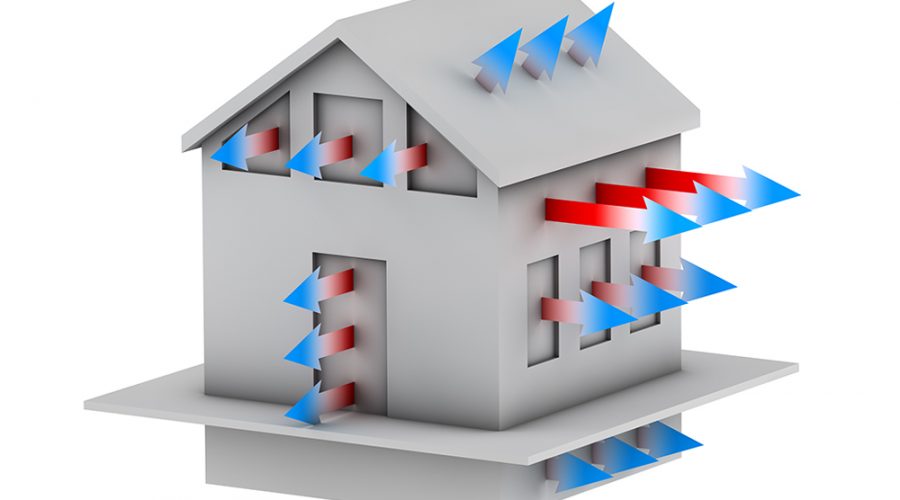From your home’s attic to its basement, all homes lose heat. Heat loss causes energy bills to skyrocket and puts a strain on your heating system.
It’s a good practice to check your home for heat loss so you can come up with a plan of attack to combat it. When you start your inspection (or “heat audit”) you will probably see that there are six ways your home loses heat. We hope this blog helps you track them down!
1. Cracks in Windows, Doors, and Walls
Around 38 percent of heat loss in your home comes from cracks in windows, walls, and doors. Even a crack as small as one-eighth of an inch can let as much heat out as a hole twice the size. Although the cracks often go unnoticed, you may feel a draft coming from a window, wall, or door. To solve this problem, seal the cracks with foam or caulk and replace the weatherstripping on all moving parts of the window and door.
2. Basement/Subfloor Walls and Floor
Your basement wall is the cause of 20 percent of your home losing heat, while only one percent is lost through the basement floor. If your basement is unfinished with a cement floor, simply add insulation (foam board, reflective foils, etc.) to existing walls. If your basement is finished or you plan to finish it, there are more options for type and placement of insulation.
3. Framed Walls
Roughly 17 percent of heat loss is from framed walls because over time, different types of insulation can deteriorate and lose its effectiveness. Luckily, the insulation can be replaced without a major renovation, although it is not a DIY project. Once you determine your home’s heat loss is through the walls, there are several types of effective insulation to install like cellulose, fiberglass, or mineral.
4. Windows
About 16 percent of heat loss is through the windows. One primary reason is because of the glass. Standard windows are tough to insulate without taking costly measures each year. Some of these DIY options are using unattractive plastic to seal the window or using blackout curtains. The best way to insulate your home for years to come is through windows with energy saving features. Pro Home Services uses vinyl windows from Alside with some of the best glass on the market to keep the cold out, as well as wood windows from Andersen, which take advantage of the natural insulating properties of wood to guard against the cold.
5. Ceilings
Your home’s ceiling accounts for around five percent of heat loss. It’s possible that heat is seeping through your ceiling into your attic. To fix this issue, measure the thickness of your current insulation in your attic. If the thickness is less than 9-10 inches, you need to replace it. If the attic is well insulated, consider insulating the access door to the attic.
6. Doors
Ill-fitting doors with faulty closures and weatherstripping can also be a major source of heat loss. If you feel drafts around your door, it’s time to replace it. When choosing a new door, the most insulating materials are fiberglass and steel. Pro Home Services offers total door replacement. Whether you need your front door or sliding patio doors replaced, Pro Home will ensure they are properly installed. We use energy star-certified Thermatru Door Company for entry doors and energy star-certified Andersen® for sliding patio doors.
All homes lose heat over time, but with yearly inspections or heat audits, you can help to prevent heat loss. Before you overwork your furnace and pay the price for it, find the issue for the heat loss, work to correct it, and keep your home warm and toasty and your family healthy and happy. Give Pro Home Services a call and we can help answer questions or set you up for new windows or doors at .(630)790-0800.

